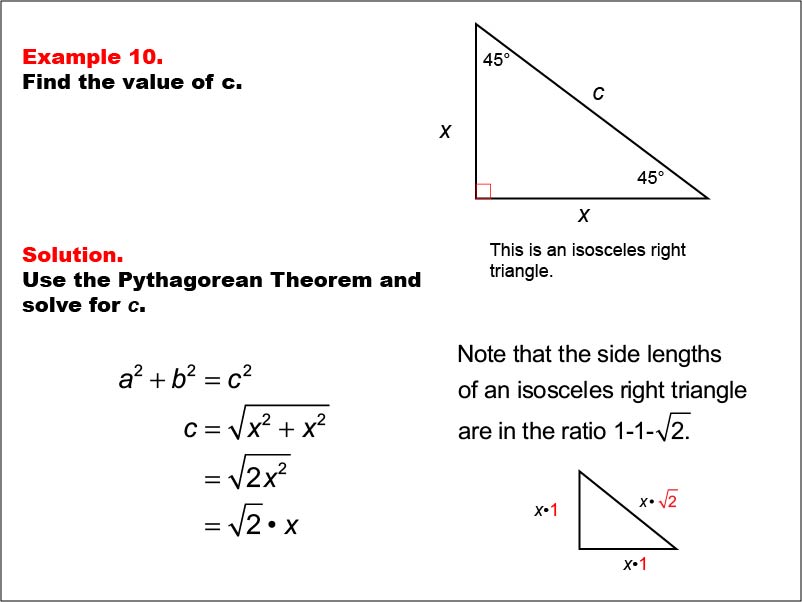
Display Title
Math Example--Right Triangles-- Example 10
Display Title
Math Example--Right Triangles-- Example 10

Topic
Right Triangles
Description
This example features an isosceles right triangle with both legs labeled as x and an unknown hypotenuse c. The angles are 45°, 45°, and 90°. Applying the Pythagorean Theorem, we find that c = √(x2 + x2) = √(2x2) = √(2) * x. This demonstrates that the side lengths are always in the ratio 1:1:√(2), regardless of the specific length of x.
This example generalizes the concept of isosceles right triangles, showing that the 1:1:√(2) ratio holds true for any leg length. It helps students understand the algebraic representation of geometric relationships and how variables can be used to express general rules in mathematics.
Providing multiple worked examples is crucial for students to fully grasp the concept of right triangles and their various applications. Each new example offers an opportunity to explore different aspects of right triangles, helping students develop problem-solving skills and a deeper understanding of geometric relationships.
Teacher's Script: Let's examine our tenth example. We have another isosceles right triangle, but this time the legs are labeled with the variable x. What does this mean? That's right, x can represent any length. Our task is to express the hypotenuse c in terms of x. As we work through this, think about how this relates to our previous examples. How does using a variable help us understand the general properties of isosceles right triangles?
For a complete collection of math examples related to Right Triangles click on this link: Math Examples: Right Triangles Collection.
| Common Core Standards | CCSS.MATH.CONTENT.8.G.B.6, CCSS.MATH.CONTENT.8.G.B.7, CCSS.MATH.CONTENT.6.G.A.1 |
|---|---|
| Grade Range | 6 - 8 |
| Curriculum Nodes |
Geometry • Triangles • Right Triangles |
| Copyright Year | 2013 |
| Keywords | right triangles, leg, hypotenuse |